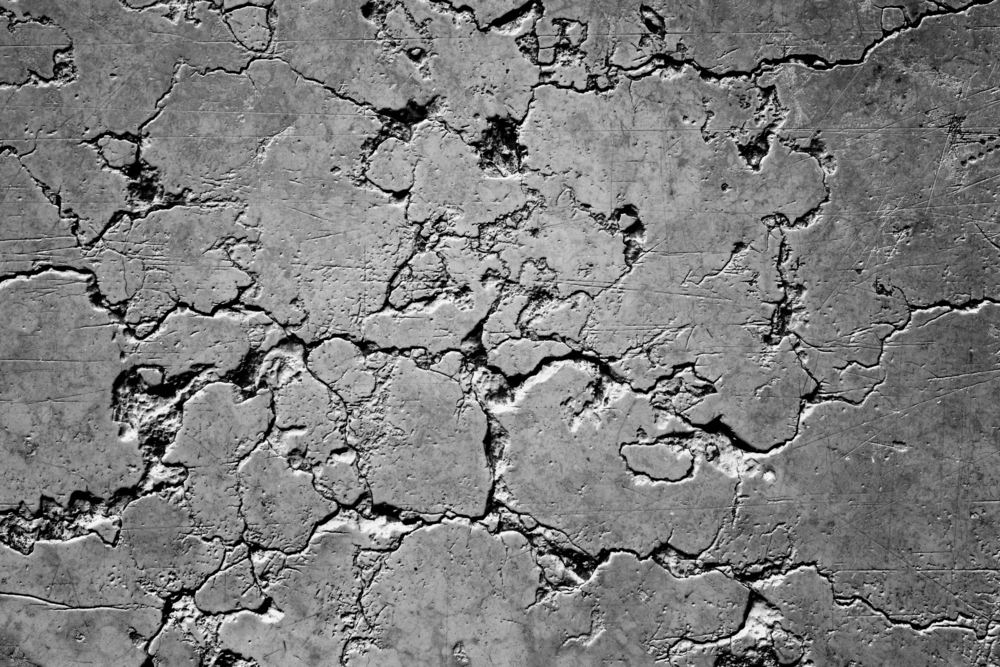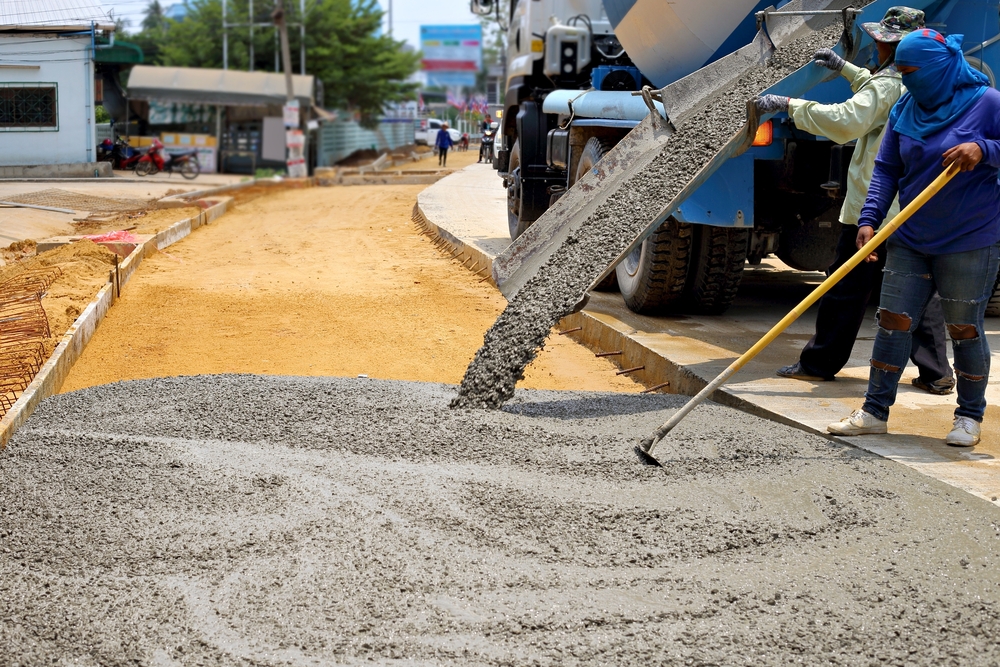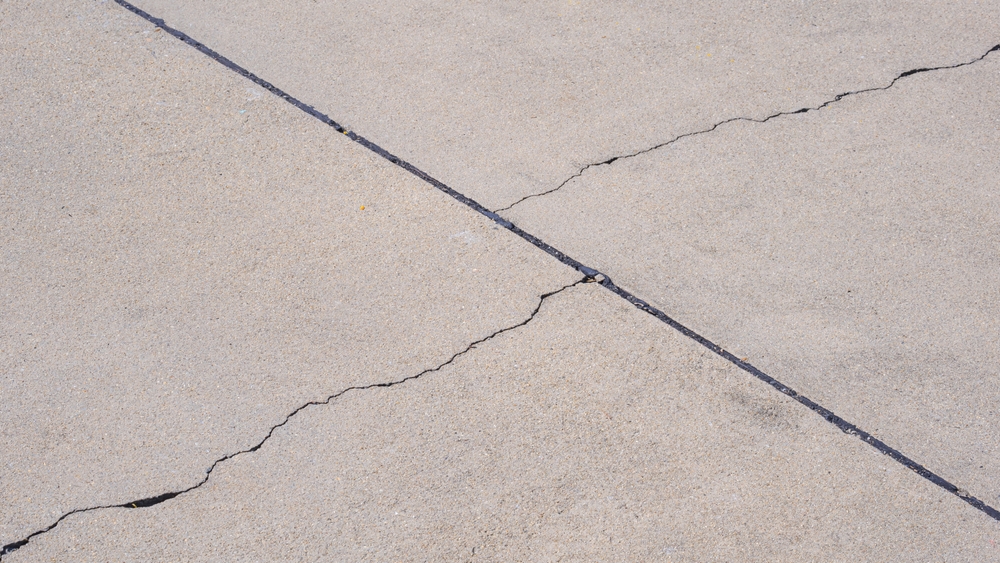
Snow and ice can quickly turn driveways and walkways into a slippery hazard during winter. But removing snow and ice the wrong way can do more harm than good. Deicing salts, harsh chemicals, and even metal shovels can cause cracking, pitting, and long-term surface damage. Cracking, scaling, and discoloration are all common issues caused by improper ice removal.
To protect your concrete and keep your property safe, it’s important to use removal methods that won’t compromise the integrity of your surface. We’ll show you the safest, most effective ways to remove ice and snow without damaging concrete, so you can stay ahead of winter without sacrificing your investment.
Why Traditional Deicers Harm Concrete
Many homeowners and businesses default to rock salt (sodium chloride) for melting snow and ice. It’s cheap, effective, and easy to find. But rock salt is extremely corrosive and can damage concrete, especially newer surfaces less than a year old.
Here’s why:
- Salt increases freeze-thaw cycles. Water melts and refreezes more frequently, which causes internal pressure in concrete, leading to cracks and surface spalling.
- Salt draws moisture into concrete pores. This moisture expands when it freezes, causing concrete to pit and scale.
- Salt is corrosive. It accelerates deterioration and harms nearby plants, metal reinforcements, and groundwater.
If you want to preserve the appearance and structural integrity of your concrete, it’s best to avoid traditional rock salt altogether.
Use Concrete-Safe Ice Melt Products
Instead of rock salt, choose ice melt products specifically formulated to be safe for concrete. These alternatives are less corrosive and effective at lower temperatures:
1. Calcium Chloride
- Melts ice down to -25°F
- Fast-acting and effective
- Less damaging than rock salt
- Safe for vegetation (in moderation)
Calcium chloride is one of the best-performing deicers for concrete. It works quickly and in colder conditions than most alternatives.
2. Magnesium Chloride
- Effective to -13°F
- Low toxicity
- Gentler on concrete and landscaping
Magnesium chloride is a popular option for eco-conscious homeowners and is safer for pets and plants.
3. Potassium Chloride
- Mild deicing agent
- Safe for plants
- Best for temperatures above 25°F
While not ideal for extremely cold climates, potassium chloride works well for moderate winter conditions.
4. Calcium Magnesium Acetate (CMA)
- Chloride-free
- Biodegradable and non-corrosive
- Safe for new concrete
- Prevents ice bonding instead of melting
CMA is the best choice for brand-new concrete surfaces. It doesn’t melt ice but stops it from sticking, allowing easy removal.
5. Beet Juice Deicer
- Natural, biodegradable option
- Effective in low temperatures
- Safe for concrete, plants, and pets
Beet juice mixed with brine or salt significantly lowers the freezing point of water. It also reduces corrosion and is growing in popularity for eco-friendly applications.
Avoid Ice Melt During the First Winter
Newly poured concrete is especially vulnerable to deicer damage. Its surface may still be curing and lacks resistance to freeze-thaw cycles. For this reason:
- Do not use any deicer during the first winter.
- Stick to mechanical removal methods (shovels, blowers, etc.).
- Use sand or other abrasives for traction.
After the first year, consider sealing your concrete to increase its resistance to moisture and deicing agents.
Use Abrasives to Improve Traction
While abrasives won’t melt ice, they significantly improve safety by enhancing traction. Consider:
- Sand
- Kitty litter
- Volcanic rock granules
These materials create a slip-resistant surface and reduce the amount of chemical deicer you’ll need. Just remember to sweep up excess material in the spring to avoid clogged drains and dusty residue.
Seal Your Concrete Before Winter
One of the most important preventive steps you can take is to apply a concrete sealer. Sealing your concrete:
- Reduces moisture penetration
- Protects against salt intrusion
- Limits freeze-thaw damage
- Improves surface durability
Choose a penetrating sealer that bonds within the concrete, not just on the surface. These sealers offer better long-term protection against winter conditions.
Apply the sealer in dry conditions before the first snowfall, ideally in early fall.
Use Snow-Melting Mats on Existing Concrete
For an effective, non-invasive solution, consider snow-melting mats. These heated rubber mats:
- Plug into standard outlets
- Can be rolled out over walkways, steps, or driveways
- Continuously melt snow and ice
- Improve traction with textured surfaces
These mats are a great option for concrete that’s already in place and can be stored when not in use.
Invest in a Heated Driveway System (For New Builds)
If you’re planning to pour a new concrete driveway or sidewalk, consider installing an in-slab heating system:
- Electric cables or hydronic tubing are embedded in concrete
- Automatically melts snow as it falls
- Eliminates the need for shoveling and chemicals
- Protects the surface from damage and wear
Though expensive upfront, heated driveways can pay off over time by reducing maintenance and prolonging the life of your concrete.
Shovel Regularly and Carefully
Sometimes, the simplest method is the best: manual snow removal. Shoveling:
- Prevents ice buildup before it forms
- Minimizes the need for chemicals
- Preserves concrete surface integrity
To avoid scratching or damaging concrete:
- Use a plastic shovel or one with a rubber edge
- Avoid sharp metal blades
- Shovel early and often during storms
Frequent shoveling also reduces compaction, which makes ice harder to remove later.
What to Do If Your Concrete Is Already Damaged
If you notice pitting, scaling, or cracking:
- Stop using chemical deicers immediately
- Sweep and clean the surface regularly
- Apply a repair compound or resurfacing overlay
In severe cases, resurfacing the concrete can restore appearance and functionality. Contact a professional contractor to evaluate your surface and recommend the best fix.
Bonus Tips to Prevent Concrete Damage in Winter
- Pretreat Before Storms: Lightly applying a concrete-safe ice melt before a storm can reduce ice bonding and make removal easier.
- Avoid Over-application: More isn’t better. Use only as much deicer as necessary to avoid buildup and environmental runoff.
- Park Mindfully: Ice and snow that clings to the undercarriage of your vehicle can melt onto the driveway and carry road salts. Consider parking on gravel or mats temporarily.
- Redirect Snow Plows: Avoid pushing chemically treated snow from the street onto your driveway or sidewalks.
Protect Your Concrete All Winter Long
Winter doesn’t have to mean concrete damage. By using the right materials and strategies, you can keep your property safe and your surfaces in great condition season after season. Avoid corrosive chemicals, seal your concrete, and invest in long-term solutions like snow-melting mats or heated driveways.
At Asphalt Coatings Company, we help commercial and residential clients protect, maintain, and extend the life of their paved surfaces. Whether you need sealing, crack repair, or resurfacing, we’ve got your back, before, during, and after the winter months.
Contact us today to schedule a consultation and learn how our expert team can help winter-proof your concrete without compromise.



